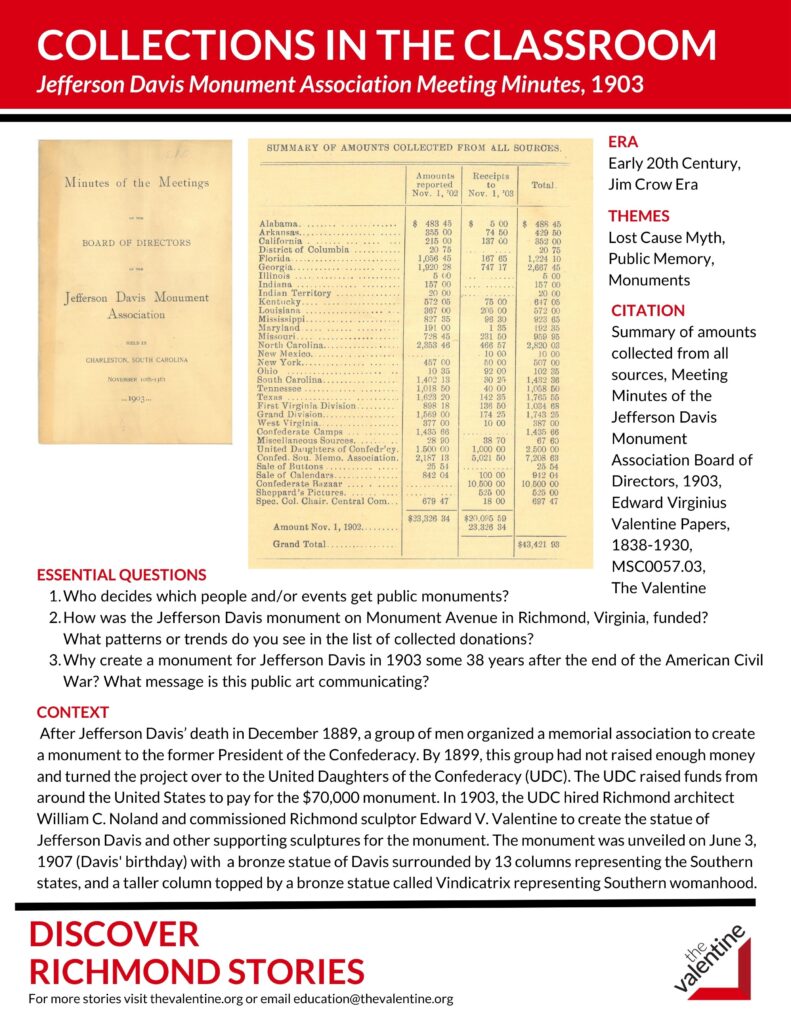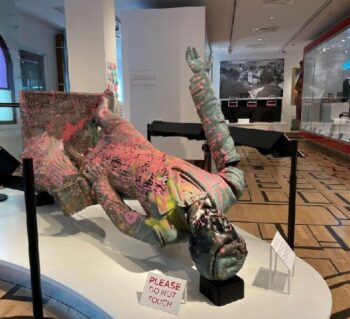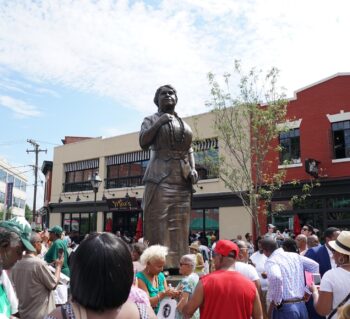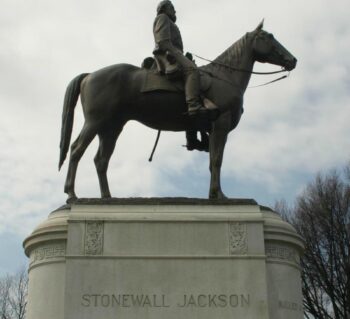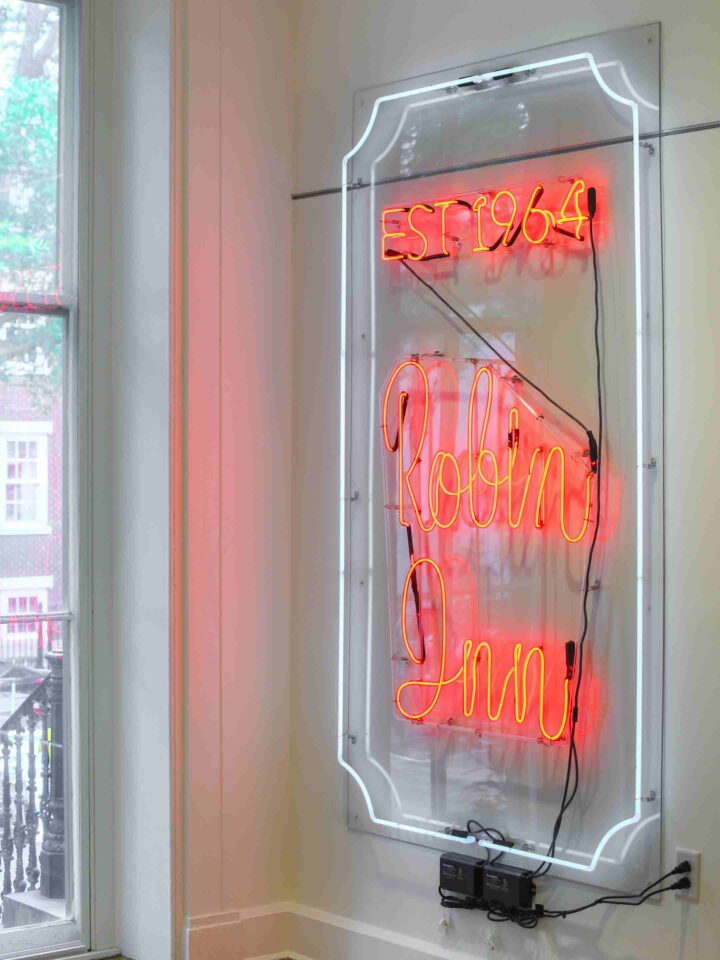
Jefferson Davis Monument Association Meeting Minutes, 1903
Collections in the Classroom
Grade Level
High, Middle
Time Period
1900-1950: Early 20th Century
Theme
Jim Crow, The Lost Cause Myth
Resource Type
Primary Source
Download Collections in the Classroom: Jefferson Davis Monument Association Meeting Minutes, 1903
ESSENTIAL QUESTIONS
- Who decides which people and/or events get public monuments?
- How was the Jefferson Davis monument on Monument Avenue in Richmond, Virginia, funded? What patterns or trends do you see in the list of collected donations?
- Why create a monument for Jefferson Davis in 1903 some 38 years after the end of the American Civil War? What message is this public art communicating?
CONTEXT
After Jefferson Davis’ death in December 1889, a group of men organized a memorial association to create a monument to the former President of the Confederacy. By 1899, this group had not raised enough money and turned the project over to the United Daughters of the Confederacy (UDC). The UDC raised funds from around the United States to pay for the $70,000 monument. In 1903, the UDC hired Richmond architect William C. Noland and commissioned Richmond sculptor Edward V. Valentine to create the statue of Jefferson Davis and other supporting sculptures for the monument. The monument was unveiled on June 3, 1907 (Davis’ birthday) with a bronze statue of Davis surrounded by 13 columns representing the Southern states, and a taller column topped by a bronze statue called Vindicatrix representing Southern womanhood.
